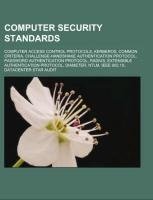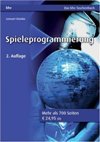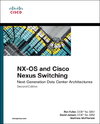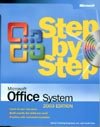
Computer security standards
Source: Wikipedia. Pages: 49. Chapters: Computer access control protocols, Kerberos, Common Criteria, Challenge-handshake authentication protocol, Password authentication protocol, RADIUS, Extensible Authentication Protocol, Diameter, NTLM, IEEE 802.1X,... Viac o knihe
Produkt je dočasne nedostupný
15.75 €
bežná cena: 17.90 €
O knihe
Source: Wikipedia. Pages: 49. Chapters: Computer access control protocols, Kerberos, Common Criteria, Challenge-handshake authentication protocol, Password authentication protocol, RADIUS, Extensible Authentication Protocol, Diameter, NTLM, IEEE 802.1X, Datacenter star audit, Cyber security standards, FIPS 140-3, Directory service, Rainbow Series, HOTP, FIPS 140-2, Needham-Schroeder protocol, Standard of Good Practice, Challenge-response authentication, Trusted Computer System Evaluation Criteria, ISO/IEC 27002, Protected Extensible Authentication Protocol, Basic access authentication, SMTP Authentication, SPNEGO, Simple Authentication and Security Layer, CRAM-MD5, Pluggable Authentication Modules, Neuman-Stubblebine protocol, Central Authentication Service, ITSEC, TACACS+, Wide Mouth Frog protocol, Yahalom, Reflection attack, BS 7799, LAN Manager, MS-CHAP, Otway-Rees protocol, POP before SMTP, BLACKER, IEEE 802.10, NTLMSSP, ISO 27799, ID-MM7, ISO 15292, Ticket Granting Ticket, AFSSI-5020, CTCPEC. Excerpt: Remote Authentication Dial In User Service (RADIUS) is a networking protocol that provides centralized Authentication, Authorization, and Accounting (AAA) management for computers to connect and use a network service. RADIUS was developed by Livingston Enterprises, Inc., in 1991 as an access server authentication and accounting protocol and later brought into the Internet Engineering Task Force (IETF) standards. Because of the broad support and the ubiquitous nature of the RADIUS protocol, it is often used by ISPs and enterprises to manage access to the Internet or internal networks, wireless networks, and integrated e-mail services. These networks may incorporate modems, DSL, access points, VPNs, network ports, web servers, etc. RADIUS is a client/server protocol that runs in the application layer, using UDP as transport. The Remote Access Server, the Virtual Private Network server, the Network switch with port-based authentication, and the Network Access Server (NAS), are all gateways that control access to the network, and all have a RADIUS client component that communicates with the RADIUS server. The RADIUS server is usually a background process running on a UNIX or Windows NT machine. RADIUS serves three functions: RADIUS servers use the AAA concept to manage network access in the following two-step process, also known as an "AAA transaction". AAA stands for "authentication, authorization and accounting". Authentication and Authorization characteristics in RADIUS are described in RFC 2865 while Accounting is described by RFC 2866. The user or machine sends a request to a Remote Access Server (RAS) to gain access to a particular network resource using access credentials. The credentials are passed to the RAS device via the link-layer protocol - for example, Point-to-Point Protocol (PPP) in the case of many dialup or DSL providers or posted in an HTTPS secure web form. In turn, the RAS sends a RADIUS Access Request message to the RADIUS server, requesting author
- Vydavateľstvo: Books LLC, Reference Series
- Formát: Paperback
- Jazyk:
- ISBN: 9781156696637


 Nemecký jazyk
Nemecký jazyk 

 Anglický jazyk
Anglický jazyk 







